12 Things Schools Used to Teach in the ’60s That Would Shock Kids Today
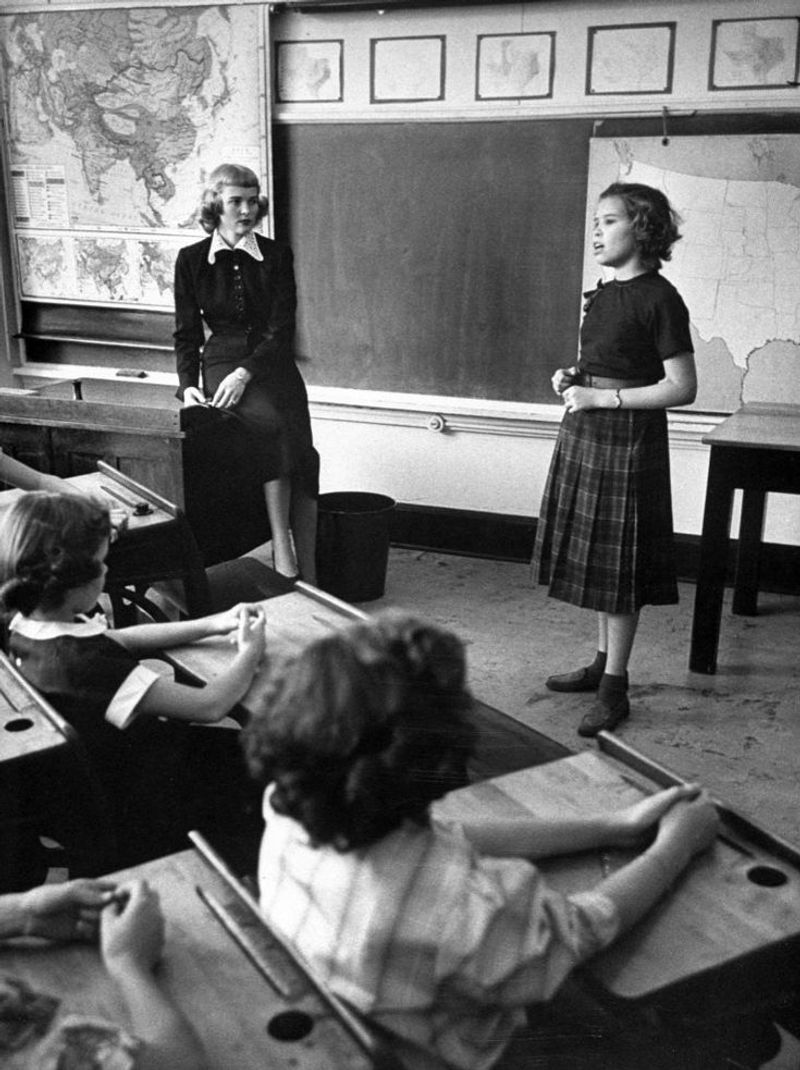
Schools in the 1960s looked very different from classrooms today. Students learned subjects and skills that might seem strange or even shocking to modern kids. Many lessons focused on preparing boys and girls for very specific roles in life, while others taught practical skills that have mostly disappeared from education. Let’s take a look.
1. Home Economics for Girls Only
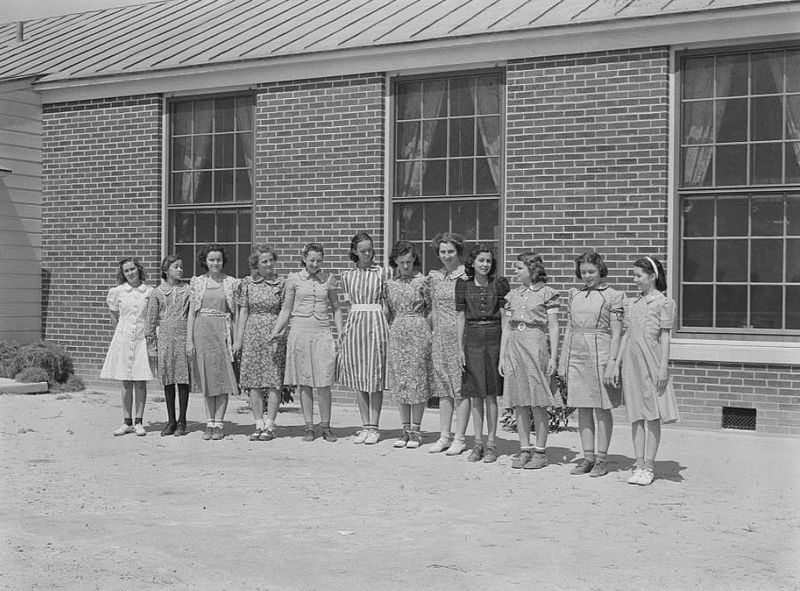
Girls spent hours learning to cook, clean, and manage a household. Classes taught them how to iron shirts perfectly, plan weekly meals on a budget, and even how to be good wives.
Boys were not allowed in these classes because people believed only women should handle domestic duties. Students practiced cooking simple meals like casseroles and learned to sew their own clothes.
Today’s kids would find it weird that schools separated students by gender for certain subjects. Modern schools teach life skills to everyone, regardless of whether they’re boys or girls.
2. Shop Class for Boys Only
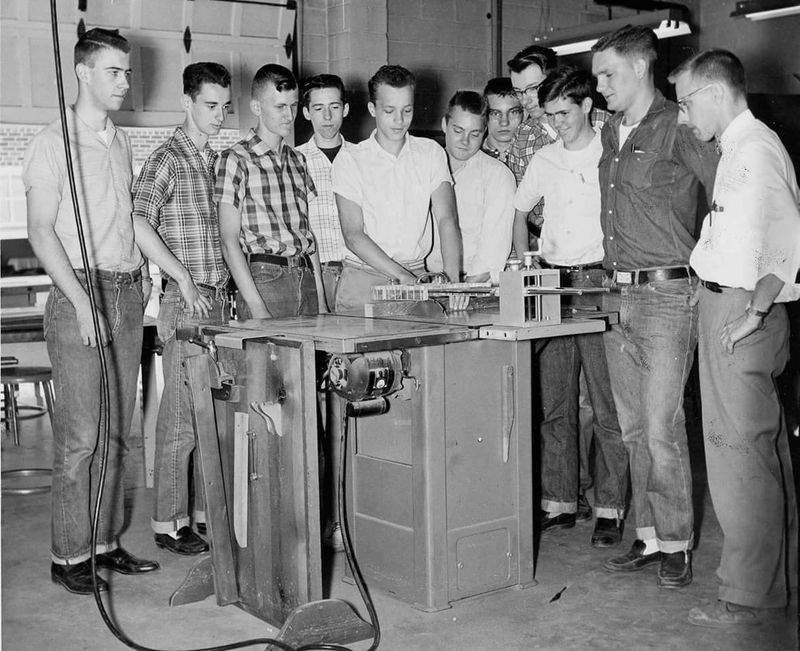
While girls learned cooking, boys headed to shop class to work with wood and metal. They built birdhouses, learned to use power tools, and studied automotive repair.
Schools believed boys needed these “manly” skills to become providers for their future families. Students created useful items like cutting boards, small furniture, and simple machines.
The idea that only boys could handle tools and machinery would surprise today’s students. Modern schools encourage all kids to explore hands-on building and creating, knowing that anyone can develop these valuable skills regardless of gender.
3. Penmanship and Perfect Handwriting

Students spent significant time each day practicing cursive handwriting. Teachers graded papers based on how neat and beautiful the writing looked, sometimes more than the actual content.
Everyone had to master the same flowing script style. Kids practiced writing the same letters over and over until they were perfect.
With computers and tablets everywhere today, many schools don’t even teach cursive anymore. Modern students might struggle to read old cursive letters from their grandparents, making this skill seem almost like learning a foreign language.
4. Deportment and Proper Posture
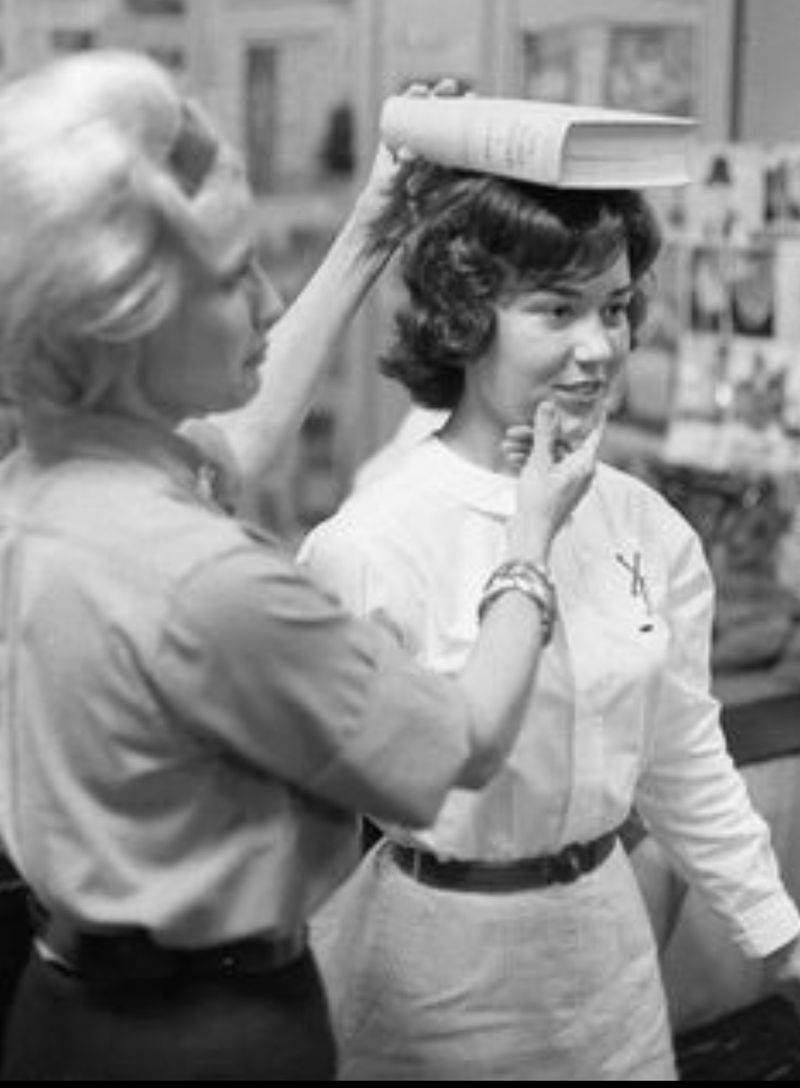
Schools taught students exactly how to sit, stand, and walk like “proper” ladies and gentlemen. Girls practiced walking with books balanced on their heads to improve posture.
Teachers corrected students who slouched or sat incorrectly. Special classes focused on table manners, how to shake hands properly, and even how to get in and out of cars gracefully.
Today’s casual approach to behavior would shock 1960s teachers. Modern kids sit cross-legged on floors, slouch in bean bag chairs, and rarely worry about walking with perfect posture through school hallways.
5. Typing on Manual Typewriters
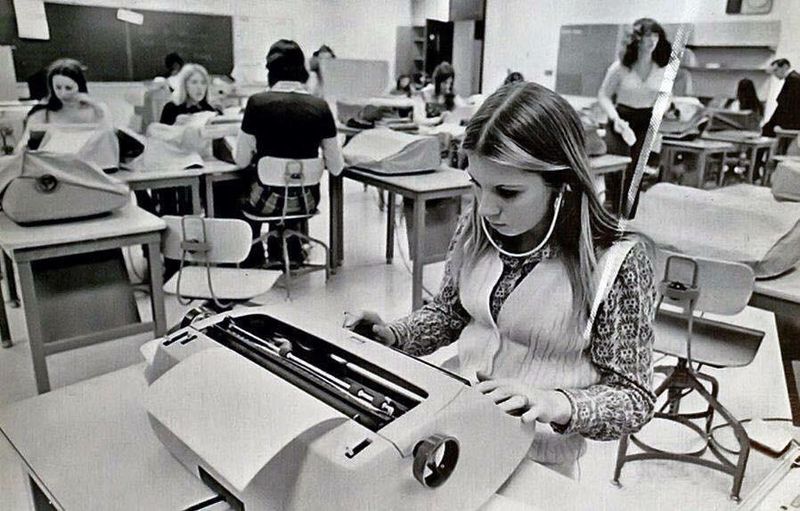
Students learned to type on heavy, mechanical typewriters that required strong fingers to press the keys. Making a mistake meant starting the entire page over again.
Classes focused on building typing speed and accuracy. Students memorized where every key was located without looking down at their hands.
The loud clacking sounds of thirty typewriters working at once filled these classrooms. Today’s kids, who grew up with delete keys and spell-check, would find the permanent nature of typewriter mistakes frustrating and the machines themselves fascinatingly primitive.
6. Civil Defense and Duck-and-Cover Drills
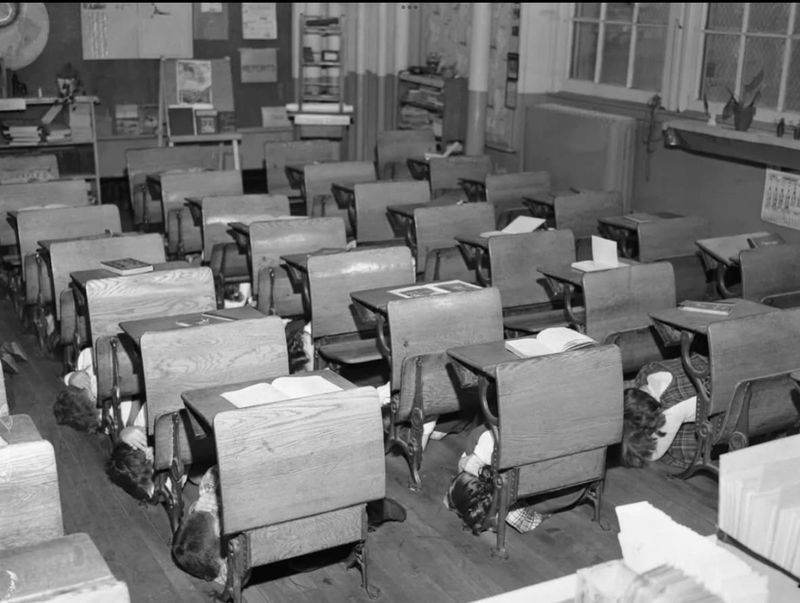
Schools regularly practiced what to do during a nuclear attack. Students learned to “duck and cover” under their desks when sirens sounded.
Teachers explained how hiding under desks could protect them from atomic bombs. Some schools even had special fallout shelters in their basements stocked with food and water.
Modern students living without the fear of nuclear war would find these drills scary and strange. The idea that a wooden desk could protect someone from an atomic bomb would seem both frightening and unrealistic to today’s kids.
7. Strict Dress Codes and Uniforms
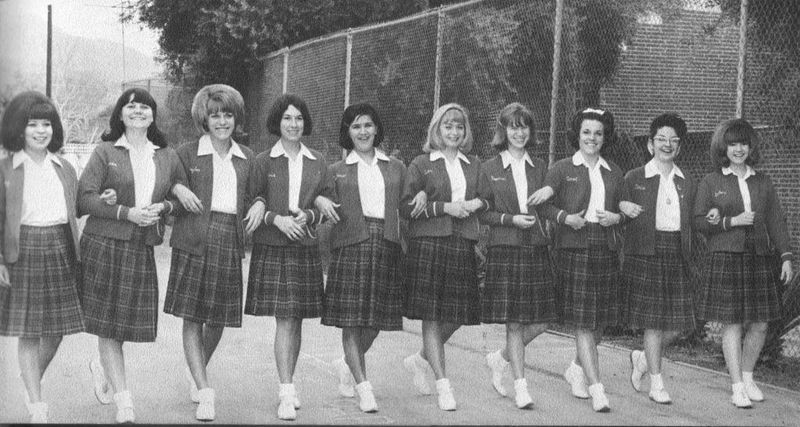
Schools enforced very specific rules about clothing. Girls had to wear dresses or skirts that covered their knees, and boys needed dress shirts and ties daily.
Teachers measured skirt lengths with rulers. Students got sent home for wearing the wrong colors, showing too much skin, or having hair that was too long.
The idea of wearing pajama pants, flip-flops, or ripped jeans to school would have been unthinkable. Today’s relaxed dress codes, where students express themselves through creative clothing choices, would shock teachers and students from the 1960s.
8. Memorizing Poetry and Long Passages
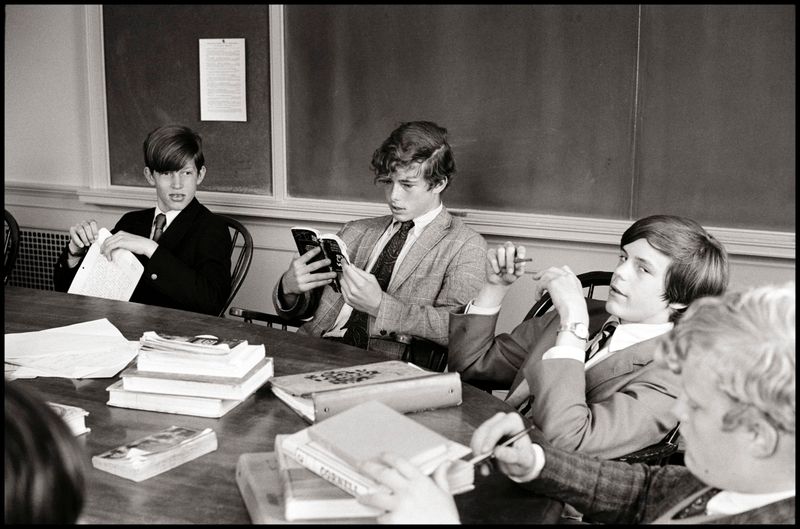
Students had to memorize entire poems, speeches, and passages from literature. Teachers expected them to recite these word-for-word in front of the class.
Memory work was considered essential for developing strong minds. Kids spent hours at home rehearsing famous works by Shakespeare, Robert Frost, and historical figures.
With Google and smartphones providing instant access to any information, today’s students rarely need to memorize long texts. The idea of spending weeks learning the Gettysburg Address by heart would seem unnecessary and difficult to modern kids who can look up anything instantly.
9. Latin as a Required Subject
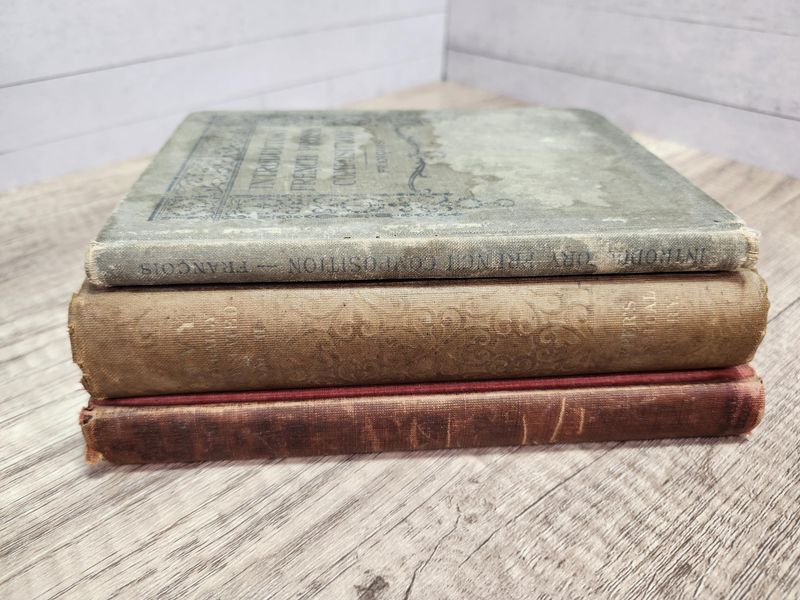
Many schools required students to study Latin for several years. Teachers believed learning this “dead” language would help students understand English better and prepare them for college.
Students memorized Latin vocabulary, grammar rules, and translated ancient Roman texts. Classes focused heavily on precise translation and understanding classical literature.
Today’s students would wonder why they need to learn a language that nobody speaks anymore. Modern schools focus on living languages like Spanish, French, or Mandarin that students can actually use to communicate with people around the world.
10. Strict Silence and Raising Hands
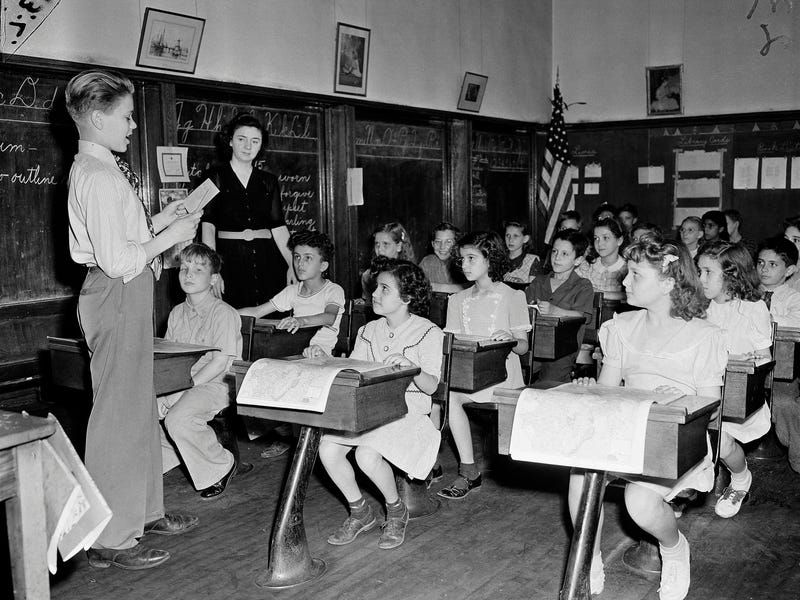
Classrooms operated under complete silence unless the teacher gave permission to speak. Students raised their hands and waited to be called on before saying anything.
Teachers demanded absolute quiet during lessons. Even whispering to a neighbor could result in punishment or being sent to the principal’s office.
Modern collaborative learning environments where students work in groups, discuss ideas freely, and move around the classroom would seem chaotic to 1960s educators. Today’s kids are encouraged to share thoughts and ask questions without such rigid formality.
11. Physical Punishment and Paddling
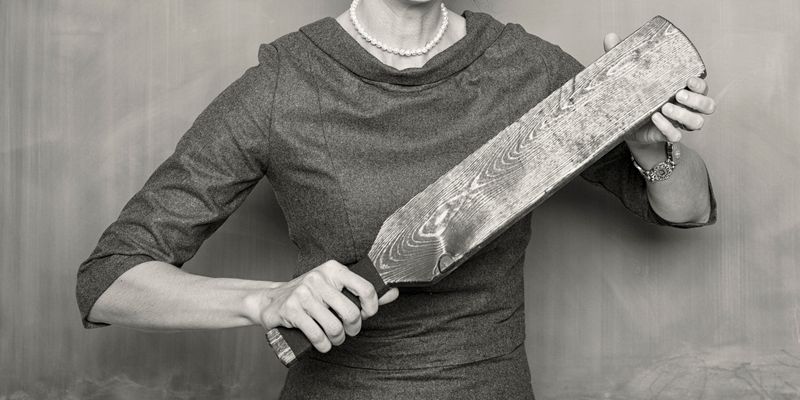
Teachers and principals used wooden paddles to punish students who misbehaved. Physical punishment was considered normal and effective for maintaining discipline.
Students could be paddled for talking back, not completing homework, or breaking school rules. Parents usually supported these punishments and rarely complained to schools.
The idea of adults hitting children at school would horrify modern students and parents. Today’s schools use time-outs, counseling, and other non-physical consequences, recognizing that hitting kids is harmful and ineffective for teaching good behavior.
12. Separate Water Fountains and Facilities
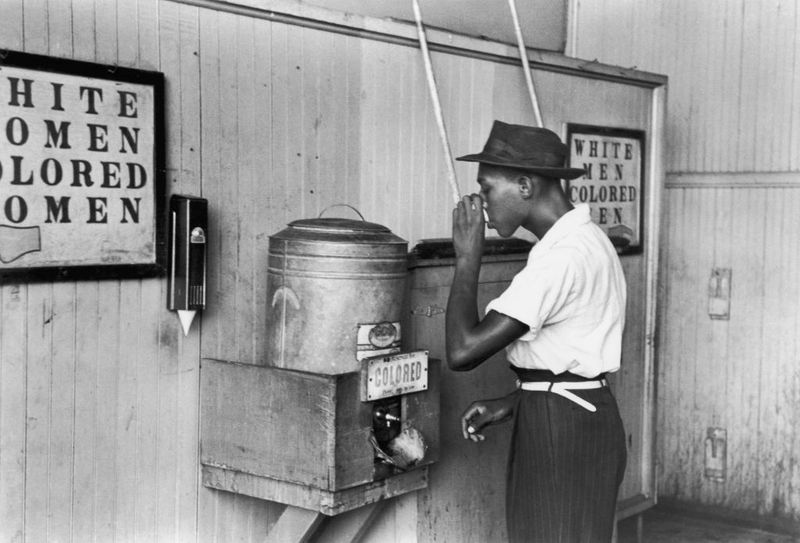
Many schools, especially in the South, had separate water fountains, bathrooms, and even classrooms for Black and white students. This segregation was legally enforced in many states.
Schools taught that this separation was normal and acceptable. Black students often received outdated textbooks and fewer resources than white students in the same districts.
Today’s integrated schools where students of all races learn together would have been illegal in many places during the early 1960s. Modern kids would find it shocking that schools once separated children based on the color of their skin.

Comments
Loading…